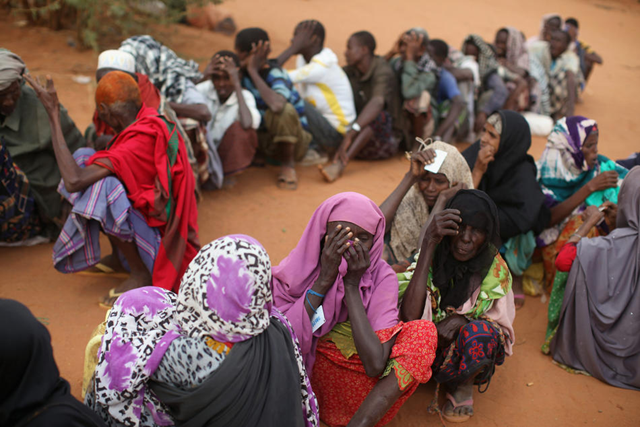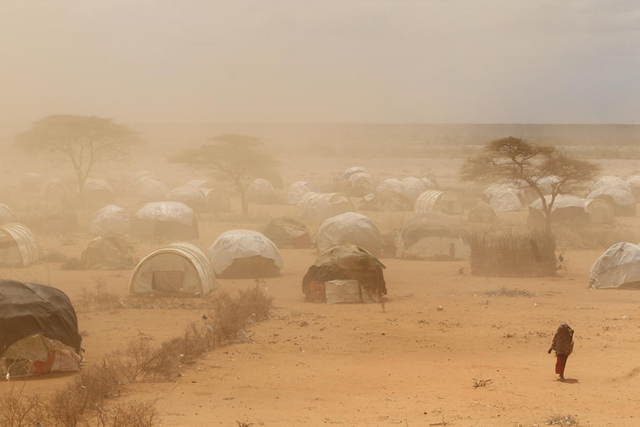Famine zone extended to Mogadishu as UN struggles in Somalia
By JASON STRAZIUSO
4 August 2011 THREE new Somali regions have been declared famine zones, expanding the area where the highest rates of malnutrition and mortality are taking place, including the refugee camps in the capital, Mogadishu. The UN’s food agency said yesterday famine is likely to spread across all of Somalia’s south in the next four to six weeks. Famine conditions are likely to persist until December, the Food and Agriculture Organisation added. Across Somalia, 3.7 million people are in crisis, the UN said, out of a population of 7.5 million – 3.2 million are in need of immediate, life-saving assistance. About 450,000 people live in Somalia’s famine zones, said Grainne Moloney, chief technical adviser for the UN’s Food Security and Nutrition Analysis Unit. The UN said the prevalence of acute malnutrition and rates of crude mortality surpassed the famine thresholds in areas of Middle Shabelle, the Afgoye corridor refugee settlement and displaced communities in Mogadishu. The UN last month said two other regions in Somalia were suffering from famine. Somalia is suffering its worst drought in 60 years. Getting aid in has been difficult because al-Qaeda-linked militants control much of the stricken areas. “Despite increased attention in recent weeks, current humanitarian response remains inadequate, due in part to ongoing access restrictions and difficulties in scaling up emergency assistance programmes, as well as funding gaps,” the UN said.
Famine zone extended as UN struggles in Somalia 
August 4 (AFP) – Famine spread to three new regions of Somalia, including the capital Mogadishu, as a US senator warned the catastrophe could be worse than the Ethiopian famine that claimed nearly 1 million lives in the 1980s. The new famine areas designated by the UN include two sites where hundreds of thousands of Somalis have fled in search of food. “Famine is now present,” said Grainne Moloney, head of the UN Food Security and Nutrition Analysis Unit for Somalia (FSNAU). “The three areas are the Afgoye corridor IDP [internally displaced persons] settlement, the Mogadishu IDP community, in all seven districts of the city, and in the Balaad and Adale districts of Middle Shabelle.” Last month, the UN declared famine in the southern Bakool and Lower Shabelle regions of southern Somalia due to the prolonged drought in the Horn of Africa region. Up to 409,000 Somalis are reported to be in the Afgoye corridor area, the world’s largest displacement camp, Ms Moloney said. In the war-torn capital Mogadishu, up to 100,000 Somalis have fled from the drought, with up to 1,000 people arriving at the camp every day, according to the UN refugee agency. “Despite increased attention in recent weeks, the current humanitarian response remains inadequate, due in part to ongoing access restrictions and difficulties in scaling-up emergency assistance programs, as well as funding gaps,” the UN unit said in a statement. “As a result, famine is expected to spread across all regions of the south in the coming four to six weeks.” At a US Senate hearing on the famine, Democratic Senator Chris Coons of Delware said: “It is the most severe humanitarian crisis in a generation, affecting food security for more than 12 million people across Somalia, Ethiopia, Kenya, Djibouti and surrounding areas.” He called the famine “a children’s crisis,” noting that hundreds of thousands of children were “on the verge of death” in the Horn of Africa due to malnutrition. Only half of the $US2 billion the United Nations has said is needed to provide emergency assistance had been committed, he said. The United States, the largest single donor, had pledged $US450 million. […]
